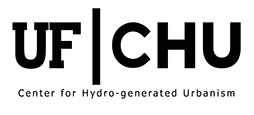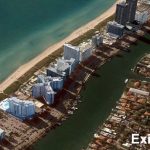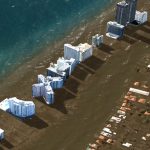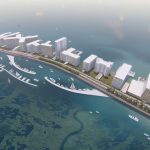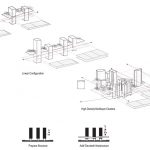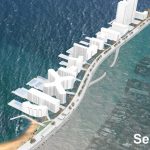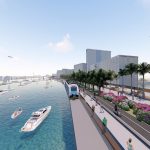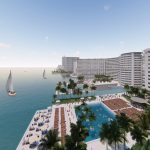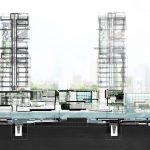Sea Belt
A New Connector for Coastal Barrier Islands
The existing conditions of the high-rise towers along the Florida coastline do not foresee preparatory measures to address the rising water levels. Vehicular transportation is the primary access mode to the towers. With the changing water levels and the predicted flooding of the streets, the current access modality will be impaired. Though 90% of the tower’s living spaces could continue to be operative after remediation strategies, the present ground and second levels would require innovative restructuring ways to maintain inhabitation of the area.
The proposal reimagines the connector spine introducing three distinct levels. The upper level, as public space, pedestrian oriented and a carrier of public transportation links, the intermediate level serving as the location of infrastructural equipment and as the new access to the coastal towers. The lower level will be the access to marinas and water based public transportation. The Sea Belt enables us to visualize the future connection of the Barrier Island to mainland.
The towers ocean fronts reimagine themselves, following the erosion of the sandy beaches, through the addition of salt water pools and other amenities engaging the resource of the open waters.
Project Team:
Nancy M. Clark
Director, UF Center for Hydro-generated Urbanism
University of Florida College of Design Construction and Planning
Martha Kohen
Director, UF Center for Hydro-generated Urbanism
University of Florida College of Design Construction and Planning
Jaysen Good
Maria Estefania Barrios
Madison Macheske
Zisalena Mendieta
Video Editor
Madison Macheske
Music
Inspire the World
Phil Larson
